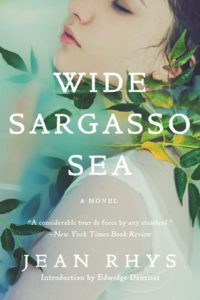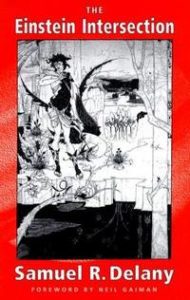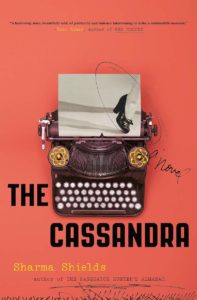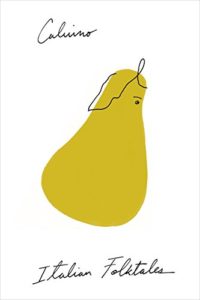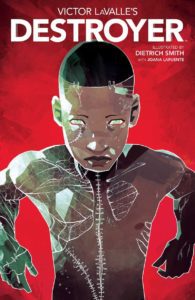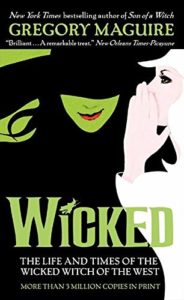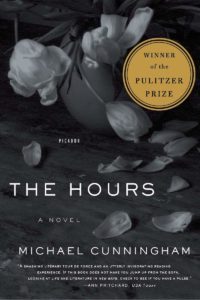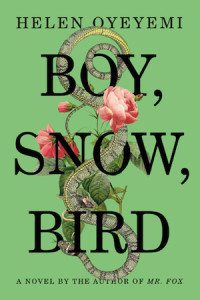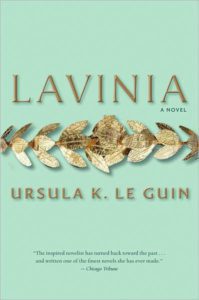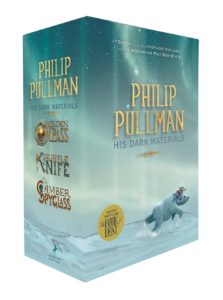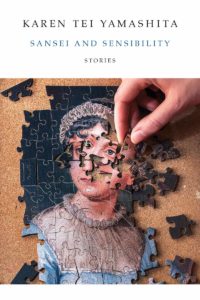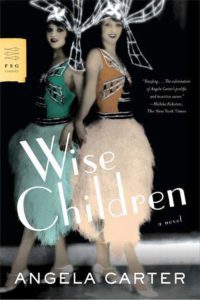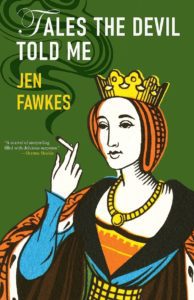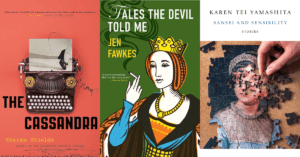
Once upon a time, I was a ballerina. This was before I saw that one glance at my mom—a robust woman of German stock—betrayed any such reality. Regardless of how coordinated or hardworking an Amazon with linebacker shoulders may be, her story cannot end with lifts, with curtain calls in limelight as roses accumulate at her pink-slippered feet.
At some point I was gifted Shirley Goulden’s Royal Book of Ballet, whose magnificent Libico Maraja illustrations are etched permanently into me. I committed the stories of the book’s five famous ballets to memory, but when my mom took me to my first staging of Swan Lake, I was outraged.
“That’s not how it ends,” I proclaimed, jumping up and turning to those seated around us. “They both die! This isn’t the real story! This is all wrong!”
My embarrassed mom explained that though the version I knew ended with the deaths of Odette and Siegfried, there was another version of Swan Lake. A version in which Siegfried’s slaying of the villainous Rothbart sets Odette and her swan sisters free from their feathery curse. In this version of Swan Lake, Odette and Siegfried marry and live happily ever after.
Thus I was introduced to the adaptability of story, the elasticity of narrative. Because they are the foundation of so much of our learning, printed texts may seem immutable, unchanging. Set in stone. But every story represents just one of many possible routes through a thicket of events, emotions, and reversals. Infinite variations branch off infinitely, from infinite points in infinite plotlines. When we grasp this, we begin to see how much further stories can take us. How they spill beyond their apparent borders. How very much every tale knows.
The ballerina I once hoped to be never imagined telling stories, and I can’t help but wonder if there’s another version of me—a woman who planned to write but ended up dancing on her toes nightly, floating through applause as softly as a plume.
Each of the books I’ve chosen for this list revisits—and reimagines—one or more well-known tales, and each has helped me learn to see through the texts I love, to call forth all the treacherous, terrifying, glorious possibilities they always already contained.
***
Wide Sargasso Sea by Jean Rhys
I met Jean Rhys at nineteen, when I read Good Morning, Midnight for a Modern British Lit course. A devotee of Jane Eyre since childhood, I immediately sought out Wide Sargasso Sea, which imagines a backstory for the madwoman stashed in Edward Rochester’s attic, and I swallowed the novel whole. Rhys weaves together the realities of her own West Indian Creole girlhood (she was born and raised in Dominica), granting possession of those specific, vivid details to Antoinette Cosway—or Bertha, as her cruel husband renames her—a character who previously existed only on the fringes of another book. A brilliant exploration of a mixed-race woman trying to survive in a man’s world—a world that sees only black and white—Wide Sargasso Sea is a lush, postcolonial, feminist tale that is at once hallucinatory and frighteningly real.
The Einstein Intersection by Samuel R. Delany
In The Einstein Intersection, set after humankind has destroyed itself, an alien anthropoid race lives among our rusting, rotting artifacts, contending with the aftereffects of radiation. Even as this novel retells the Orpheus myth—a herder named Lobey leaves his village to challenge Death and bring his love Friza back from the grave—The Einstein Intersection points out that no matter how diligently Lobey’s race attempts to mimic human form, to relive human memories, to understand human myths, they cannot, as humanness itself is an illusion. A wildly fresh take on the eternal tension between the individual and society, The Einstein Intersection won the 1967 Nebula Award and announced Delany as a sci-fi/speculative fiction pioneer.
The Cassandra by Sharma Shields
The Cassandra is among the most powerful books I’ve read. Like the mythical Cassandra, Mildred Groves is beset by visions of a future no one believes. A job at a secret World War II-era atomic research facility gives Mildred a sense of purpose for the first time in her life. At Hanford, however, she encounters talking animals—heron, coyote, and snake—who warn Mildred that the facility’s work will result in horrific, irreversible destruction. Though she sees more than her boss and coworkers and attempts to share the animals’ dire warnings with them, Mildred is blind in her own ways, and therefore complicit in what comes. Impressively—and bravely—Shields never attempts to neaten the messiness of Mildred’s story, and she doesn’t allow her Cassandra—or the reader—to turn away from humankind’s own horrors, from our profound darkness.
Italian Folktales by Italo Calvino
I was six the year Italian Folktales appeared in English, and my mom bought a copy from Publishers Bookshop in Little Rock, Arkansas, where we spent much of our time. After she read the eight-hundred-page book, she passed it on to me, and I dragged that tome around, reading each of its two hundred tales repeatedly. Though they share traits with the French tales gathered by Marie Catherine D’Aulnoy (who coined the term “fairy tale”) and Charles Perrault, and the German tales gathered by the Brothers Grimm, the stories Calvino gathered for his book tend to be less magical, grim, and frightening; more earthy, rustic, and humorous. Even as a child, I sensed that each of these tales—culled by Calvino from centuries of Italian oral tradition—was pointing to much more than it contained, to whole worlds that existed beyond its borders.
Destroyer by Victor LaValle
Victor LaValle’s Destroyer, a six-issue graphic novel series, reimagines Mary Shelley’s Frankenstein. In this version, the Monster created by Dr. Victor Frankenstein in the nineteenth century still lives in the icy reaches of Antarctica. When our continued encroachment on the natural world comes to his attention, the Monster departs Antarctica armed with a freshly rekindled hatred for humankind. Meanwhile, Victor Frankenstein’s last living descendant, Dr. Josephine Baker, a Black molecular biologist and biomechanical engineer who lost her twelve-year-old son to senseless police violence, is following in her forebear’s footsteps, employing weapons-grade nanotechnology to bring her slain boy back to life. Impressively illustrated by Dietrich Smith, this graphic series reimagines Frankenstein in a manner that will resonate vividly with twenty-first century readers.
Wicked: The Life and Times of the Wicked Witch of the West by Gregory Maguire
I was twenty when Wicked appeared. The way this book approached retelling a story I knew perhaps better than any other was, for me—as a reader, as an outcast, and as a big-nosed woman—revolutionary. L. Frank Baum’s highly imaginative land of Oz was filled with allegorical allusions to American society in the 1930s, when The Wizard of Oz was published. Interestingly, as Gregory Maguire’s vivid reimagining of Oz pushes Baum’s allegories even further, it also emphasizes the fact that many of the same problems plagued American society in the 1990s. Many authors have subsequently appropriated Maguire’s methods, and Maguire himself has written other reimaginings in the vein of Wicked, but it was this story of Elphaba Thropp—aka the Wicked Witch of the West—that really began to shape my sense of how much more there is to every story.
The Hours by Michael Cunningham
Mrs. Dalloway has been one of my favorite books for three decades, but I was hesitant to read The Hours, in which Virginia Woolf appears as a character. I was eventually seduced, however, by the novel’s layered brilliance. Braiding together stories of Woolf, a 1990s version of Clarissa Dalloway, and a 1950s housewife, The Hours skillfully imitates the narrative style of Mrs. Dalloway while asking, deepening, and amplifying that novel’s central questions. The nature of time, the ravages of illness, the tempestuous nature of the artistic mind, and how to survive life in a human body are explored to beautiful, and devastating, effect. A big-nosed-woman sidenote: a chef at a Philadelphia restaurant where I worked in the early aughts once said I look like Nicole Kidman in the film version of The Hours, which I took as a win.
Boy, Snow, Bird by Helen Oyeyemi
A reimagining of the story of Snow White, this novel engages in several fascinating inversions: a female protagonist named Boy; a pale, blonde woman who gives birth to a Black daughter; and an abusive father who turns out, in the end, to be a traumatized mother. Boy escapes her abusive father, a professional ratcatcher, and lands in a Massachusetts town populated by deadly serious craftsmen. She marries a white man named Arturo and gives birth to a Black daughter, thereby revealing Arturo’s family’s long-held secret. Boy becomes “wicked stepmother” to Arturo’s daughter Snow, who is white, and she must figure out how to raise Bird, her own Black daughter. Told by alternating first-person narrators and employing the epistolary form, Boy, Snow, Bird has the timeless, universal feel of a fairy tale even as it asks pressing, contemporary questions about race, family, and beauty.
Lavinia by Ursula K. Le Guin
This novel—Le Guin’s last—revisits the last six books of Virgil’s Aeneid and gives voice to Lavinia, Aeneid’s bride. Lavinia, daughter of the king of the Latins, lives in a muddy village on the Tiber River that will one day become Rome. Omens have proclaimed that Lavinia will marry a foreigner, be the cause of a war, and that her husband will not live long. In Le Guin’s rich reimagining, Lavinia watches her future husband’s approach, and then proceeds to tell her own story. Throughout, Lavinia converses with the shade of Virgil—the Poet who created her—which serves to both tie the novel to its origin tale and give the impression that our narrator is aware of the textual nature of her own existence. At novel’s end, Lavinia has become an owl, reinforcing the notion that this is not meant to be a history, that Lavinia regards the world she inhabits as a product of Virgil’s vivid imagination.
His Dark Materials by Phillip Pullman
I must admit that when I first read it, I didn’t realize His Dark Materials retells John Milton’s Paradise Lost (1667). Pullman saw his trilogy as an inversion of Milton’s poem in which the loss of innocence doesn’t lead to a fall—as in the Christian tradition—but is instead a necessary, positive step toward adulthood. Though His Dark Materials and The Golden Compass—the first book’s title—are both lifted from the text of Paradise Lost, I am not alone in initially missing the connections. Like Milton’s classic epic, Pullman’s trilogy grapples with reconciling religion, philosophy, and science, but I suspect many readers are most strongly drawn to the trilogy’s fantastical elements. Set in a multiverse stocked with armored polar bears, airships, witches, and daemons—constant animal companions tethered to humans, throughout their lives—and featuring one of the most winsome girl heroines of all time, these books are a joy to read.
Sansei and Sensibility by Karen Tei Yamashita
In this wonderful collection, Yamashita reimagines each of Jane Austen’s novels as a short story set in 1960s-70s California, among Japanese Americans, specifically sansei—the grandchildren of Japanese immigrants. Sense and Sensibility’s impoverished Dashwood sisters become the impoverished Dashimori sisters; Mr. Darcy becomes the captain of the football team; Northanger Abbey is revisited in a tale titled “Japanese Gothic.” Mixed with these Austen reimaginings are other Karen Yamashita stories, including her first published piece, “The Bath” (1975), and one of my favorites, “The Dentist and the Dental Hygienist” (1986). Yamashita’s stories are delightfully inventive, astute, and off-kilter, combining humor and speculative elements in beautifully fresh ways. The witty explorations of the lives of nisei and sansei that make up Sansei and Sensibility are as thought-provoking as they are entertaining.
Wise Children by Angela Carter
Wise Children combines two of my favorite things—Angela Carter and the plays of William Shakespeare. Written after Carter was diagnosed with terminal lung cancer, Wise Children is the story of twin chorus girls Dora and Nora Chance. Set on their seventy-fifth birthday, the novel is mainly made up of Dora’s memories, perhaps most notably of the twins’ adventures in 1920s Hollywood, where they worked on a film version of A Midsummer Night’s Dream. Wise Children is structured like an Elizabethan Drama, in five “Acts.” An homage to Shakespeare’s comedies, the book opens with a pair of young lovers and contains multiple sets of twins, reversals of fortune and paternity, a melding of high and low art, feisty old people, elements of the carnivalesque, metafictional references to theatre, and an acknowledgement of the artifice that permeates our lives. Though Carter was dying as she wrote Wise Children, her final book is remarkably ebullient, optimistic, and upbeat.
And to close out this wonderful list, we just had to include Jen’s new story collection, Tales the Devil Told Me, out October 5 from Press 53! – Ed.
Tales the Devil Told Me by Jen Fawkes
What if Captain Hook gave up marauding and took a gig at the Post Office? How did Hamlet’s uncle Claudius become such a rat? What might happen if a plastic surgeon fell for Medusa? If Moby Dick could write a letter, what would he say to Ahab? The answers to these and many other questions can be found in Tales the Devil Told Me by Jen Fawkes, winner of the 2020 Press 53 Award for Short Fiction. These twelve stories examine the possible lives of such classic literary villains as Professor Moriarty, Shere Khan, Rumpelstiltskin, Polyphemus, Mrs. Danvers, and others, while illuminating the consumptive nature of love, the crushing weight of isolation, the false promise of beauty, and the power of storytelling itself.

